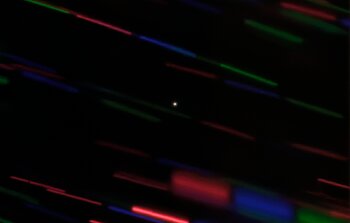An international team of astronomers using Gemini North’s GNIRS instrument have discovered that CK Vulpeculae, first seen as a bright new star in 1670, is approximately five times farther away than previously thought. This makes the 1670 explosion of CK Vulpeculae much more energetic than previously estimated and puts it into a mysterious class of objects that are too bright to be members of the well-understood type of explosions known as novae, but too faint to be supernovae.
The release, images and videos are available on:
https://noirlab.edu/public/news/noirlab2029/
Kind regards,
NOIRLab Information Center
Nov. 24, 2020

|
24 Nov. 2020 - ann20018
Joan Najita of NSF’s NOIRLab has been named a Fellow of the American Association for the Advancement of Science (AAAS). Election as an AAAS Fellow is an honor ...
|
| Read more |

|
22 Nov. 2020 - ann20017
An international team of astronomers has identified the nature of Earth’s second known minimoon, 2020 CD3, following its discovery by the Catalina Sky Survey and follow-up imaging with the international ...
|
| Read more |

|
17 Nov. 2020 - rubinann20020
Project & Science News
Construction activity on Cerro Pachón continues to expand, with approximately 40 people working on the summit each day last week. That will increase this week, with ...
|
| Read more |
|
|
|
|